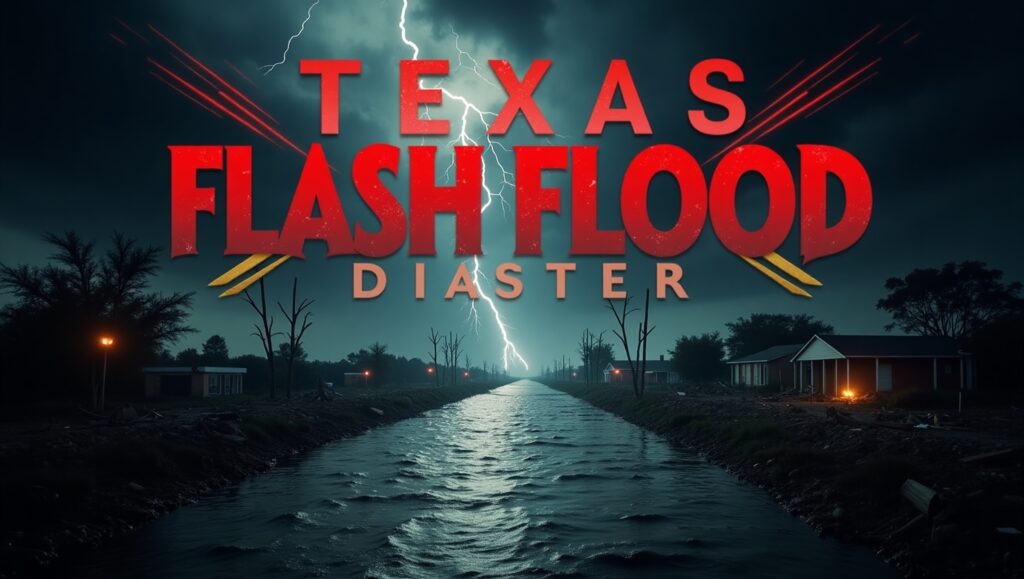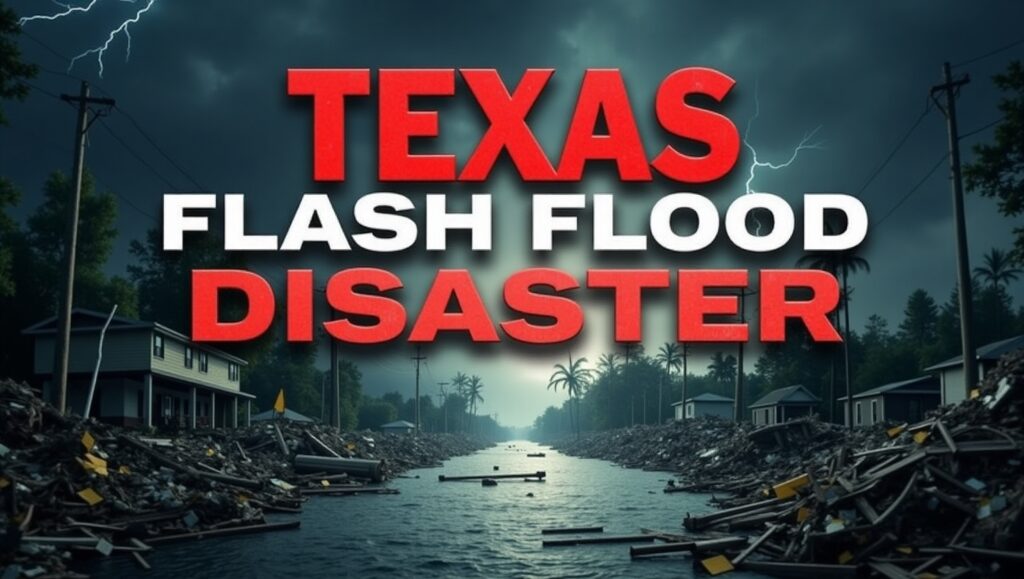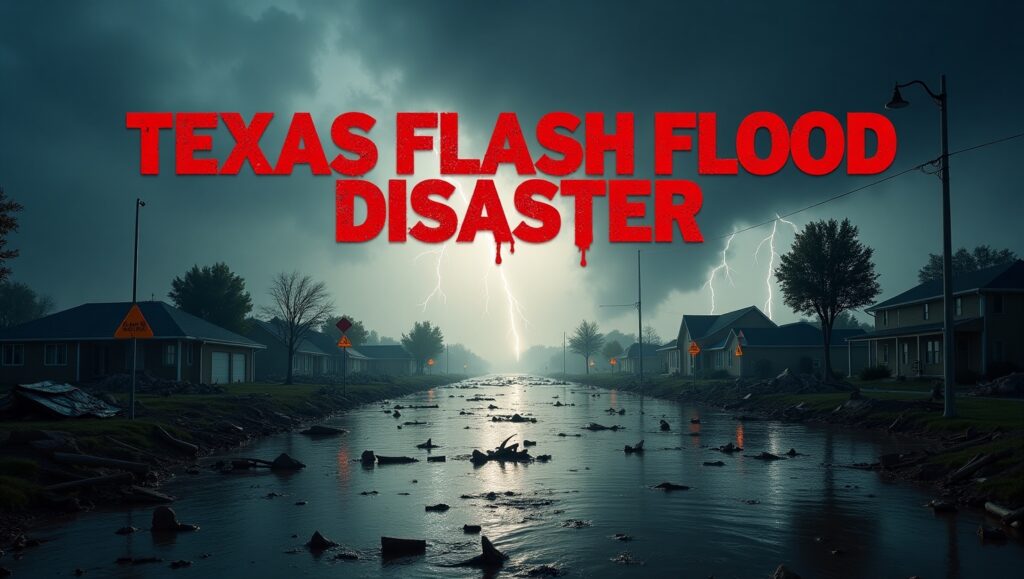One of the worst flash floods in Texas history hit the state in July 2025. Heavy rains, overflowing rivers, and drainage systems that couldn’t handle the water caused a lot of damage, displacing thousands of people and leaving communities in shock. As emergency workers work around the clock to save people who are stuck and fix important infrastructure, the crisis has prompted serious issues about how to prepare for the future, how to develop cities, and how to make them more resilient to climate change.

Rainfall and flash flooding that have never happened before
A strong storm system that stayed across central and eastern Texas for a few days started the disaster. More than 20 inches of rain fell in less than 48 hours in cities like Houston, Austin, San Antonio, and the regions around them. The Brazos, Trinity, and Guadalupe rivers all overflowed their banks, causing flash floods that moved quickly and destroyed cars, bridges, and neighborhoods.
The National Weather Service sent out many emergency notifications, saying it was a “once-in-a-century flooding event.” Even though there were early warnings, the floods came on quickly and strongly, catching many people off guard and causing terrible things to happen.
The cost to people and the work to save them
As of mid-July 2025, at least 62 individuals are known to have died, while hundreds more are hurt or missing. The Texas National Guard and FEMA are two of the emergency responders who have saved more than 12,000 people from rooftops, flooded homes, and cars that were stuck.
Hospitals are overflowing, and schools, churches, and sports arenas have been turned into temporary shelters for people who have lost their homes. Local communities, volunteers, and nonprofit groups have all worked together to give people food, clothes, and basic medical treatment.
Governor Greg Abbott said there was an emergency in the whole state:
“This is a sad time for Texas.” We are using all of our resources to help, save, and rebuild our communities.
Infrastructure Failure and Damage to the Economy
The floods did a lot of damage to homes, roads, electricity lines, and water infrastructure. Parts of I-35 and I-10, as well as many other highways and interstates, were entirely flooded or wiped away. At the height of the storm, more than 1.5 million people lost power, and dozens of localities had to tell citizens to boil water because it was contaminated.
The damage is still being looked at in terms of money, but early estimates say it will cost more than $25 billion. Homeowners, small businesses, and farmers have been impacted the hardest. Many insurance firms are getting ready for a lot more claims, some of which are coming from places that weren’t thought to be at high risk before.
Climate Change and How Cities Are Weak
Experts say that the Texas flash flood calamity is part of the bigger problem of climate change. Extreme weather events, such heavy rain and flooding, are happening more often and getting worse because of warmer temperatures.
Texas communities are also more at risk because of urban growth in places that are low-lying and prone to flooding. For instance, in Houston, quick growth with little green space and bad drainage systems has transformed severe storms into natural disasters over and over again.

Dr. Angela Martinez, a climatologist at the University of Texas, says:
:
“This isn’t simply a one-time thing. It’s a sign that the planet is getting warmer and that infrastructure is getting old.
What the government and community did
The federal government has agreed to give money for disaster relief, and President Biden has said he will go to the communities that were hit. Emergency money are being set aside for things like temporary housing, fixing damaged infrastructure, and buying medical supplies.
In the meantime, recovery operations organized by the community are picking up speed. Churches, civic groups, and mutual aid groups in the area are doing a lot to support people who have lost everything in the flood. Texans are showing strength and unity in the face of sorrow by doing things like holding food drives and helping with mental health issues.
Hashtags like #TexasStrong and #FloodRelief2025 are helping to organize volunteer work and raise money through social media campaigns.
A Call for Change That Will Last
The flash flood calamity in Texas has been a wake-up call. Urban planners, environmentalists, and politicians are increasingly being pushed to build infrastructure that can withstand climate change, improve early warning systems, and rethink zoning regulations in areas that are likely to flood.
Some of the ideas being put forward include building higher levees, developing wetlands, and improving stormwater systems. But these reforms need political will, money, and a long-term commitment.

The end
The flash flood calamity in Texas in 2025 is a sad reminder of how powerful nature is and how weak people are when the climate changes. Even while it will take time to get back on track, this is a chance to make things better, smarter, and safer.
People in communities are coming together with strength and kindness. But proactive investment, sustainable growth, and planning based on research must become the norm, not the exception, if we want to avoid future disasters.
News on the Texas flood disaster
Deaths and destruction from the Texas floods
Texas flood emergency response
Change in the weather Floods in Texas
Flooding in Houston’s cities
Natural disaster in Texas in July 2025
Texas rainfall amounts for 2025
FEMA’s answer Flood in Texas
Texas rescue from flash floods



